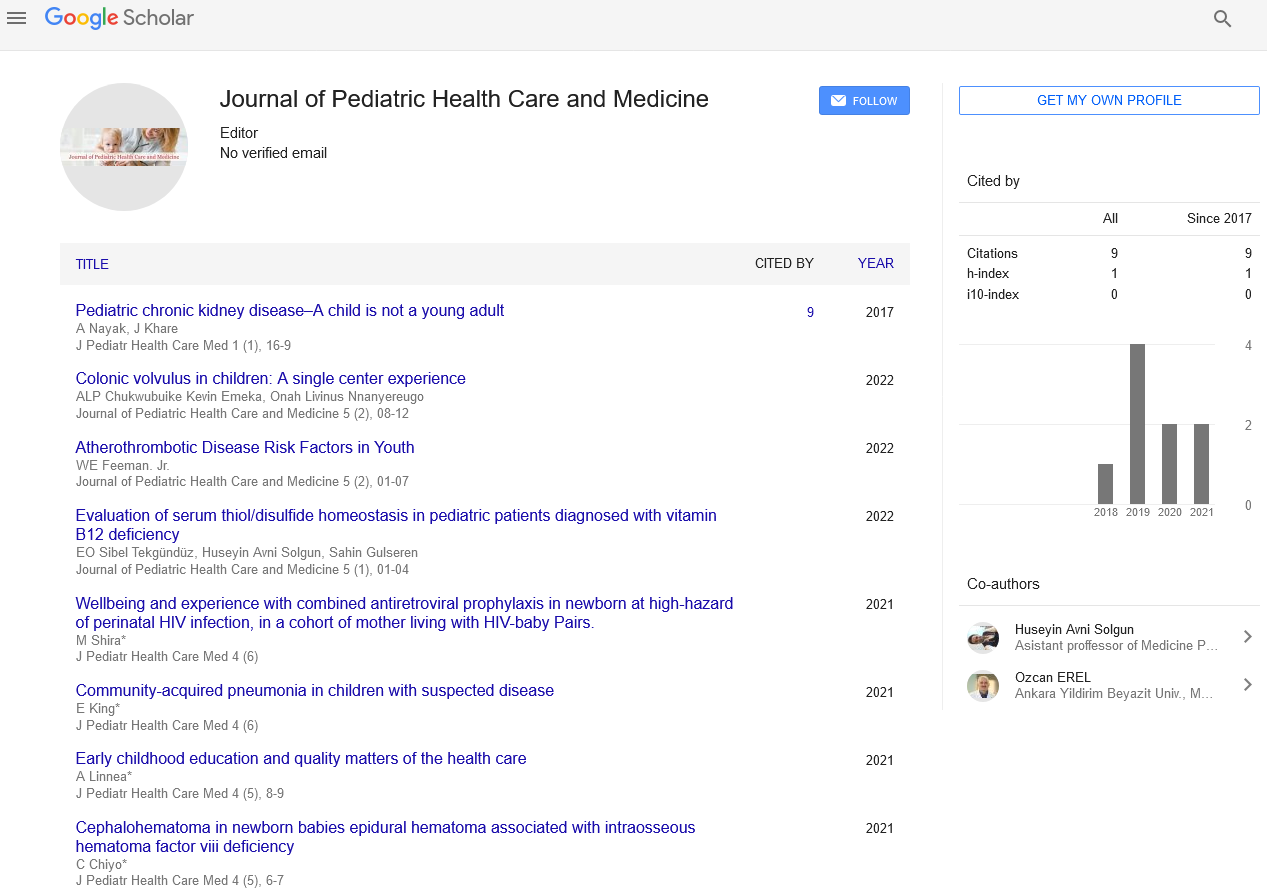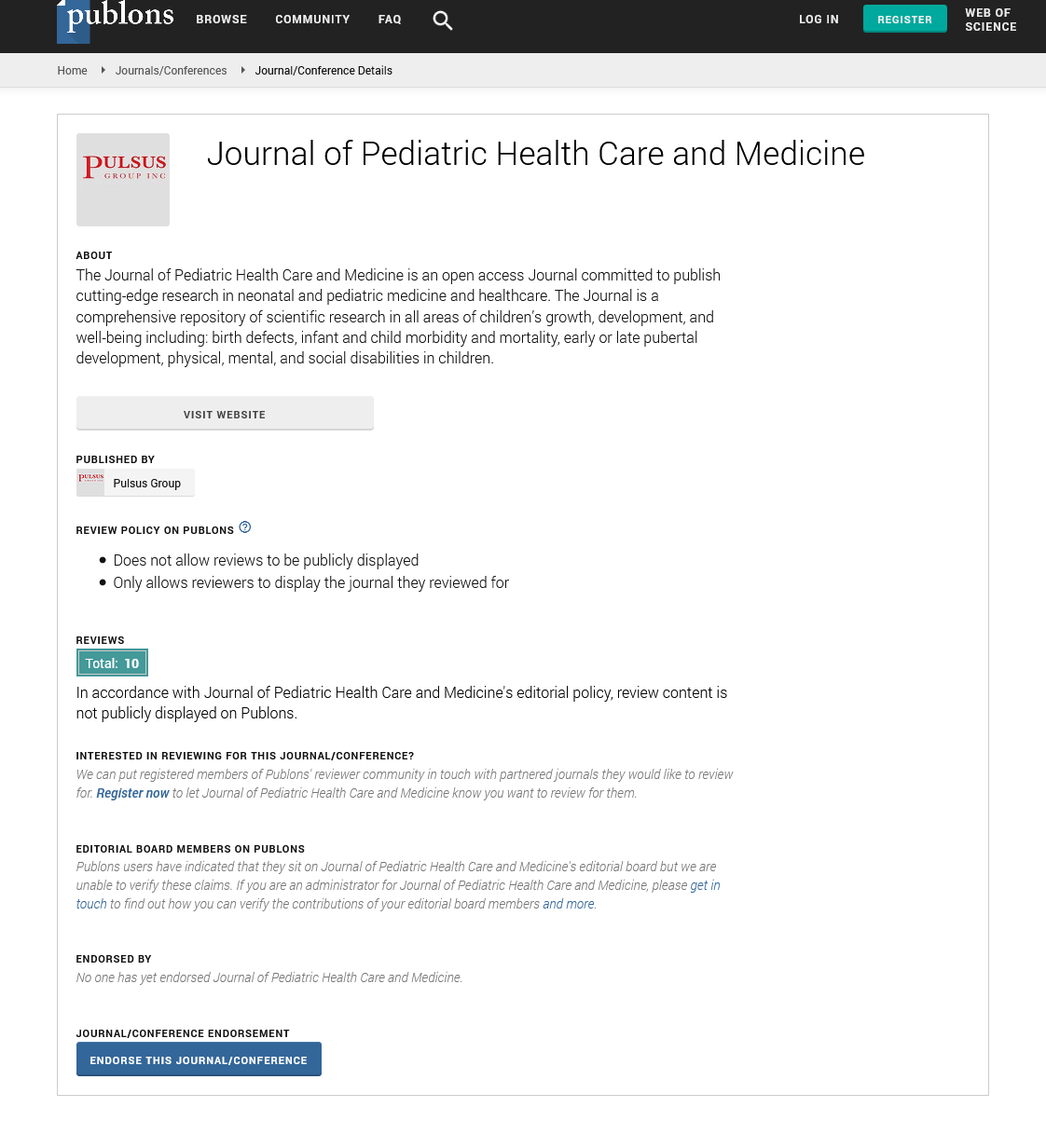
Sign up for email alert when new content gets added: Sign up
Abstract
Sudden Infant Death Syndrome and the diaphragm: Is there a link?
Author(s): Pontus M SirenThere are over 12,000 publications on Sudden Infant Death Syndrome on the PubMed database. Of these, only 59 are related to SIDS and the diaphragm, even though the diaphragm powers the vital respiratory pump, and its failure is a well-known cause of death in adults. Two recent communications published in Nature Pediatric Research (Blind Spot and The Missing Link) on April 6 and June 5th, 2021, respectively, highlight the fact that there is a potentially consequential blind spot in SIDS research. This presentation highlights three important facts: 1. The diaphragm has not been adequately studied in the context of SIDS 2. There is no compelling evidence to exclude the diaphragm from SIDS research 3. There is compelling data to suggest that diaphragm failure may play a role in SIDS and that the hypothesis should be investigated Despite decades of intense research, the cause of death in Sudden Infant Death Syndrome (SIDS) remains unknown. This short communication draws attention to the blind spot and highlights five reasons for why the diaphragm should be investigated in the context of SIDS: 1) There is broad consensus that SIDS likely has a respiratory origin 2) All key cardiorespiratory organs, except the diaphragm, have been extensively investigated in the context of SIDS 3) The diaphragm powers the vital respiratory pump and is critical for survival 4) There is no compelling evidence to suggest the diaphragm can be excluded from SIDS research 5) There is a substantial body of evidence to suggest that the diaphragm plays a central role in SIDS, and the SIDS – Critical Diaphragm Failure (SIDS-CDF) hypothesis posits that all SIDS risk factors either increase the workload of the diaphragm or reduce its force generating capacity The origin of SIDS remains a mystery, but there is broad consensus that the syndrome likely has a respiratory origin because research and clinical investigation has ruled out airway occlusion or trauma as the cause of the syndrome. The number of articles published on PubMed is a good indicator of the focus of SIDS research. In Q4h, 2021, there are 12,365 publications on sudden infant death syndrome. Of these, 2285, relate to SIDS & the heart, 714 to SIDS & lungs, 982 to SIDS & central nervous system. There is no evidence in the published works to indicate that the diaphragm should be excluded from SIDS research. There are at least five compelling reasons to investigate the diaphragm in the context of SIDS: 1. There is a strong correlation between SIDS and nonlethal infections. Infections can produce severe respiratory muscle weakness in adults, which is a major contributor to respiratory failure. Infections can reduce the diaphragm’s ability to generate force by as much as 50% in 24h. 2. The prone sleeping position is an important risk factor for SIDS. For an infant, the prone position significantly increases the work of breathing and decreases respiratory muscle endurance. 3. SIDS is associated with rapid eye movement (REM). The intercostal muscles show both phasic and tonic inhibition during REM sleep that renders them largely or totally inactive. The chest wall muscles are critical for ventilation in the infant with a pliable chest wall, and loss of muscle tone increases the diaphragm’s workload. 4. Elevated levels of vascular endothelial growth factor in the cerebrospinal fluid of SIDS infants indicate that they experience one or more hypoxic events over several hours to days before death. Hypoxia exacerbates diaphragm and abdominal muscle fatigability and can impair the diaphragm’s ability to generate force. 5. Hyperthermia is independently associated with an increased risk of SIDS. It is well known that hyperthermia increases the workload of the respiratory muscles. Conclusion: SIDS likely has a respiratory origin and despite decades of intense research, the cause of death is unknown. Besides the diaphragm, all other key cardiorespiratory organs have been comprehensively investigated in the context of SIDS. There is no evidence to suggest the diaphragm should be excluded from SIDS research. On the contrary there is compelling evidence to suggest that diaphragm should be comprehensively investigated in the context of SIDS. Yet, the diaphragm remains a collective blind spot that may contribute decisively to our inability to uncover the cause of SIDS





